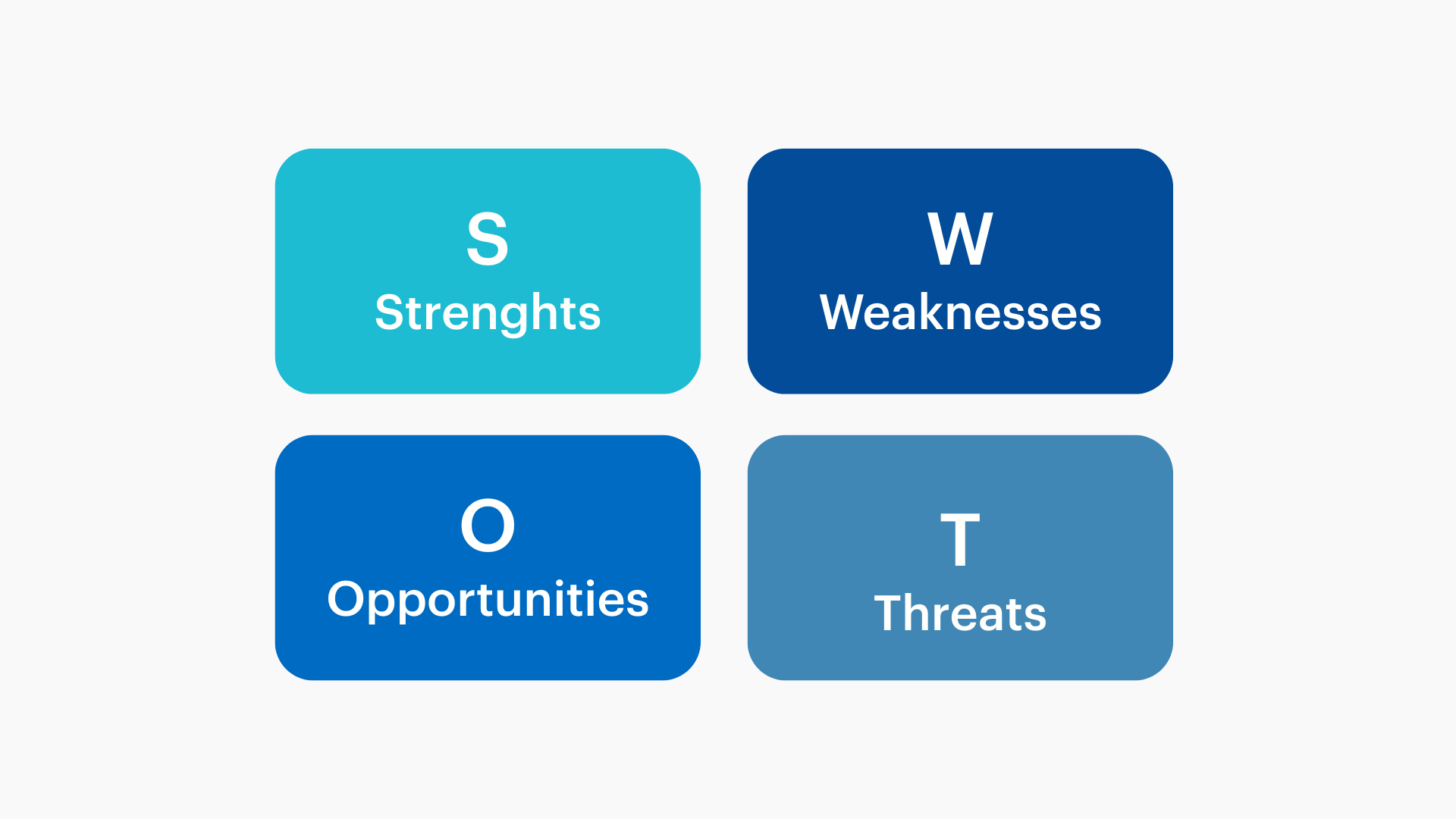What is SWOT analysis and how to conduct it?

SWOT analysis is one of the most popular strategic planning tools that allows companies and individuals to understand the internal and external factors influencing their success. This blog post will introduce you to how SWOT analysis works, why it is important, and how to effectively implement it into your business strategy.
What is SWOT analysis?
SWOT analysis is an acronym for Strengths, W (for Weaknesses) – weaknesses, O (for Opportunities) – opportunities, and T (for Threats) – threats. This tool helps identify and analyze factors that can influence your business, thereby enabling the development of effective strategies.
Key components of SWOT analysis
- Strengths: Internal factors that give you a competitive advantage. These include, for example, a qualified team, quality products, or a strong brand.
- Weaknesses: Internal factors that can hinder your growth or success, such as insufficient resources, outdated technology, or poor organization.
- Opportunities: External factors that you can leverage to improve your market position. These might be new trends, technological innovations, or entry into new markets.
- Threats: External factors that could jeopardize your business, such as competition, legislative changes, or economic crises.
Why is SWOT analysis important?
SWOT analysis provides a comprehensive view of your company's situation, which is crucial for creating effective strategies. Thanks to this analysis, you can:
- Identify key areas for improvement: Understanding weaknesses allows you to focus on specific areas and take steps to address them.
- Leverage opportunities: Recognizing opportunities enables you to adjust your strategy and take advantage of new trends or market gaps.
- Reduce risks: Identifying threats helps you prepare for potential negative impacts and minimize their effects.
- Improve decision-making processes: A clearly structured SWOT analysis simplifies strategic planning and decision-making based on objective data.
How to conduct a SWOT analysis step by step
- Gather Information: Start by collecting internal and external data about your company. Utilize internal documents, employee feedback, market analysis, and competitor research.
- Create the SWOT Matrix: Divide the collected information into four categories – strengths, weaknesses, opportunities, and threats. Use a clear matrix for better visualization.
- Analyze and Prioritize: Evaluate each item and determine which factors have the greatest impact on your business. Focus on the key areas that need immediate attention.
- Develop Strategies: Based on the results of the SWOT analysis, develop specific action plans. Determine how you can leverage strengths and opportunities while minimizing weaknesses and threats.
- Implementation and Monitoring: Put the proposed strategies into practice and regularly monitor their effectiveness. Repeat the SWOT analysis at regular intervals to ensure it reflects the current conditions.
Examples of using SWOT analysis in practice
1. Start-up Companies
For young companies, it is crucial to quickly identify their strengths, such as an innovative product or a unique business model, while being aware of weaknesses like a limited budget or lack of experience. With SWOT analysis, these companies can effectively plan for growth and development.
2. Established Enterprises
Even established companies face constant changes in the market. Regular SWOT analysis helps them maintain a competitive edge, identify new opportunities, and prevent potential threats.
Conclusion
SWOT analysis is an invaluable tool that helps you better understand the internal and external factors affecting your business. A properly conducted analysis not only increases the effectiveness of strategic planning but also allows you to respond to rapidly changing market conditions. Use the above tips for SEO optimization to ensure that your content reaches the widest possible audience.


.svg.png)








